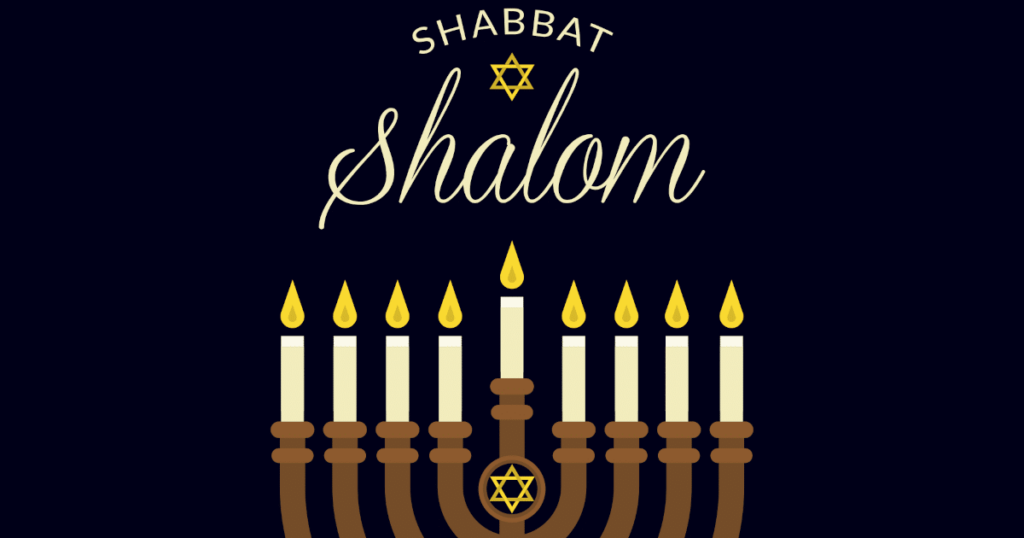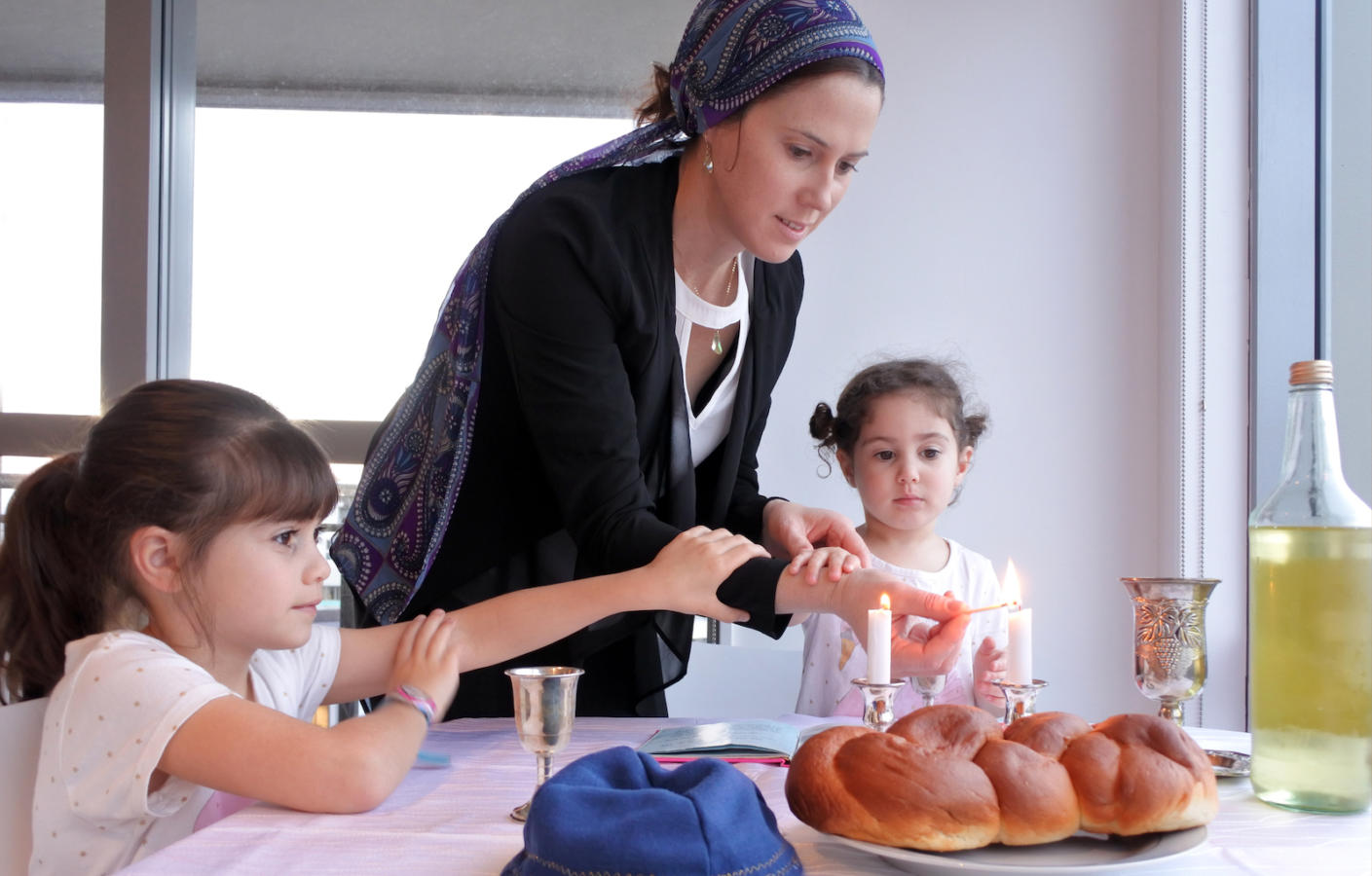
Shabbat Shalom, a phrase resonating deeply within Jewish tradition, holds significance beyond mere words. It encompasses the essence of rest, peace, and spiritual rejuvenation.
Shabbat Shalom means “Sabbath of peace” in Hebrew, symbolizing a wish for a peaceful and complete Sabbath.
This article delves into the origins, meaning, and customs surrounding Shabbat Shalom, exploring its profound impact on individuals and communities.
Introduction To Shabbat Shalom:
Shabbat Shalom is a Hebrew phrase that translates to “Sabbath of peace.” It signifies the Jewish day of rest and spiritual rejuvenation, observed from Friday evening to Saturday evening.
It encapsulates a wish for a peaceful and complete Sabbath, embodying the values of rest, harmony, and spiritual renewal within Jewish tradition.
“Shabbat Shalom” is a customary greeting among Jews, symbolizing goodwill and blessing for a peaceful Sabbath.
Origins Of Shabbat Shalom:
Shabbat, originating from the Hebrew word “Shabbat,” refers to the Jewish day of rest and spiritual rejuvenation, observed from Friday evening to Saturday evening.
Shalom, also from Hebrew, translates to “peace” or “wholeness.” When combined, Shabbat Shalom encapsulates the wish for a peaceful and complete Sabbath.
The Meaning Of Shabbat Shalom:

1. Shabbat:
Shabbat is a sacred day in Judaism, honoring the seventh day of creation when God rested. It is a time for reflection, prayer, and spending quality time with family and community.
2. Shalom:
Shalom embodies the concept of peace beyond the mere absence of conflict. It encompasses harmony, well-being, and completeness in all aspects of life – physical, spiritual, and emotional.
Importance Of Shabbat Shalom In Jewish Culture:
Shabbat Shalom holds profound significance in Jewish culture, symbolizing the culmination of a week’s work and the beginning of spiritual rejuvenation. It serves as a reminder to prioritize rest, reflection, and connection with loved ones.
Observing Shabbat Shalom Traditions:

1. Lighting The Shabbat Candles:
Women traditionally light candles before sunset on Friday, ushering in the Sabbath’s peaceful ambiance.
2. Attending Synagogue Services:
Jews gather in synagogues to pray and recite blessings, fostering community and spiritual unity.
3. Having Festive Meals:
Families come together for elaborate meals, sharing traditional dishes and stories, fostering bonds and joyous fellowship.
Benefits Of Observing Shabbat Shalom:
1. Physical Relaxation:
Shabbat provides a much-needed break from the hectic pace of modern life. By refraining from work and engaging in restful activities, individuals can rejuvenate their bodies and minds, promoting overall well-being.
2. Spiritual Renewal:
Shabbat is a time for spiritual reflection and connection. Through prayer, meditation, and communal rituals, individuals can deepen their spiritual practice and find inner peace and fulfillment.
3. Strengthened Familial Bonds:
Shabbat meals and traditions unite families, fostering closeness and creating lasting memories. Quality time spent with loved ones strengthens relationships and reinforces family values.
4. Enhanced Mental Well-Being:
Disconnecting from technology and embracing the rhythm of Shabbat promotes mental clarity and emotional resilience. Mindfulness and gratitude practices during Shabbat contributed to a positive mindset and reduced stress levels.
5. Cultivation Of Values:
Shabbat encourages acts of kindness, generosity, and hospitality. By embodying these values, individuals contribute to the well-being of their communities and cultivate a sense of purpose and fulfillment in their lives.
Tips For Incorporating Shabbat Shalom Into Daily Life:

1. Designate Sacred Time:
Set aside a specific time each week to observe Shabbat Shalom. Creating a sacred space for rest and reflection is essential, whether Friday evening to Saturday evening or another designated time.
2. Create Rituals:
Develop personal or family rituals that mark the beginning and end of Shabbat. Lighting candles, reciting blessings, and sharing a special meal can set the tone for a peaceful and meaningful Shabbat experience.
3. Disconnect From Technology:
Unplug from electronic devices and screens during Shabbat to cultivate a sense of presence and mindfulness. Use this time to connect with loved ones, engage in meaningful conversations, or immerse yourself in nature.
4. Engage In Spiritual Practices:
Incorporate spiritual practices such as prayer, meditation, or studying sacred texts into your Shabbat routine. These practices can deepen your connection with spirituality and provide a sense of purpose and direction.
5. Reflect And Renew:
Take time at the end of Shabbat to reflect on the past week and set intentions for the week ahead. Use this time for self-reflection, goal-setting, and envisioning the life you want to create.
Symbolism Behind Shabbat Shalom:
Shabbat Shalom symbolizes not only the cessation of work but also the attainment of inner peace and spiritual fulfillment. It serves as a reminder to strive for harmony and tranquility in all aspects of life.
Shabbat Shalom Around The World:
While rooted in Jewish tradition, the concept of Shabbat Shalom resonates beyond religious boundaries, promoting universal values of peace, rest, and renewal.
Common Misconceptions About Shabbat Shalom:
Misconceptions about Shabbat Shalom may arise from its perceived exclusivity or strict observance. However, its essence transcends religious boundaries, offering profound wisdom and guidance for all.
Modern Interpretations Of Shabbat Shalom:
In a rapidly changing world, the essence of Shabbat Shalom remains relevant, offering solace, reflection, and spiritual nourishment amidst life’s challenges.
Shabbat Shalom In Contemporary Society:
Despite modern challenges, the practice of Shabbat Shalom endures, serving as a beacon of hope and resilience in an ever-changing world.
Conclusion:
In conclusion, Shabbat Shalom is more than a mere greeting; it is a profound expression of peace, rest, and spiritual renewal deeply ingrained in Jewish tradition. By embracing its essence, individuals of all backgrounds can cultivate inner harmony, forge deeper connections, and nurture the spirit of peace within themselves and their communities.
Related Questions:
1. What Is The Significance Of Lighting Candles During Shabbat?
Lighting candles symbolizes the transition from the mundane to the sacred, ushering in the Sabbath’s peaceful atmosphere.
2. Can Non-Jews Observe Shabbat Shalom?
While Shabbat Shalom is rooted in Jewish tradition, its message of peace and rest is universal, welcoming all who seek spiritual rejuvenation and inner tranquility.
3. How Do Families Typically Celebrate Shabbat Shalom?
Families gather for festive meals, pray and reflect, and share blessings and stories, fostering a sense of unity and joyous fellowship.
4. What Are Some Modern Interpretations Of Shabbat Shalom?
In contemporary society, Shabbat Shalom continues to offer solace, reflection, and spiritual nourishment amidst the complexities of modern life.
5. How Can One Incorporate Shabbat Shalom Into Daily Life?
Incorporating elements of Shabbat Shalom, such as mindfulness, rest, and connection with loved ones, can enhance overall well-being and cultivate a more profound sense of peace and purpose.
Read:






